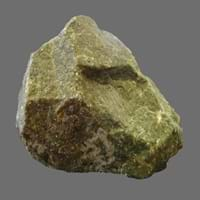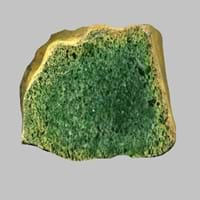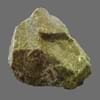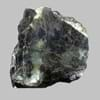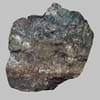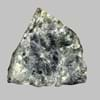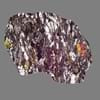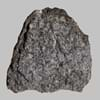Definition
Dunite is a green to brownish coarse-grained igneous rock mainly consisting of olivine
Jadeitite is a metamorphic rock usually found in blueschist grade metamorphic terrains
Origin
New Zealand
Unknown
Discoverer
Ferdinand von Hochstetter
Unknown
Etymology
From the name of Dun Mountain, New Zealand, + -ite1
From pyroxene mineral jadeite
Class
Igneous Rocks
Metamorphic Rocks
Sub-Class
Durable Rock, Medium Hardness Rock
Durable Rock, Medium Hardness Rock
Group
Plutonic
Not Applicable
Other Categories
Coarse Grained Rock, Opaque Rock
Fine Grained Rock, Opaque Rock
Texture
Phaneritic
Earthy
Color
Dark Greenish - Grey
Black, Brown, Colourless, Green, Grey, White
Durability
Durable
Durable
Appearance
Rough and Shiny
Rough and Dull
Interior Uses
Decorative Aggregates, Interior Decoration
Decorative Aggregates, Homes, Interior Decoration
Exterior Uses
As Building Stone, As Facing Stone, Garden Decoration, Paving Stone
Garden Decoration, Office Buildings, Paving Stone
Other Architectural Uses
Curbing
Curbing
Construction Industry
As Dimension Stone, Cement Manufacture, Construction Aggregate, for Road Aggregate, Making natural cement, Raw material for the manufacture of mortar
As Dimension Stone, Cutting Tool, Knives
Medical Industry
Not Yet Used
Not Yet Used
Antiquity Uses
Artifacts, Monuments, Sculpture, Small Figurines
Artifacts, Jewellery, Monuments, Sculpture
Commercial Uses
Creating Artwork, Gemstone, Jewelry, Source of Chromite, Platinum, Nickel and Garnet, Source of Diamonds
Commemorative Tablets, Creating Artwork, Jewelry
Types
Not Available
Not Available
Features
Constitutes upper part of the Earth's mantle, Generally rough to touch, Host rock for Diamond, Is one of the oldest rock
Host Rock for Lead
Archaeological Significance
Famous Monuments
Data Not Available
Data Not Available
Famous Sculptures
Data Not Available
Data Not Available
Formation
Dunite is a plutonic ultramafic igneous rock consisting almost m olivine. It can be formed in two ways.
Due to change in environmental conditions, rocks are heated and pressurized deep inside the Earth's surface. Jadeitite is formed from the extreme heat caused by magma or by the intense collisions and friction of tectonic plates.
Mineral Content
Amphibole, Chromite, Garnet, Magnesium, Olivine, Phlogopite, Plagioclase, Pyroxene
Carbonate, Magnetite, Pyrrhotite, Serpentine, Sulfides
Compound Content
Ca, CaO, Fe, Potassium, Silicon Dioxide, Sodium, Titanium Dioxide
Ca, CaO, Carbon Dioxide, KCl, MgO, Sulfur Dioxide, Sulphur
Types of Metamorphism
Burial Metamorphism, Cataclastic Metamorphism, Contact Metamorphism
Cataclastic Metamorphism, Contact Metamorphism, Regional Metamorphism
Types of Weathering
Biological Weathering, Chemical Weathering, Mechanical Weathering
Not Applicable
Types of Erosion
Coastal Erosion, Glacier Erosion, Water Erosion
Coastal Erosion, Water Erosion, Wind Erosion
Grain Size
Coarse Grained
Very fine-grained
Fracture
Irregular
Uneven
Streak
White
White, Greenish White or Grey
Porosity
Less Porous
Less Porous
Luster
Shiny
Waxy and Dull
Cleavage
Imperfect
Irregular
Specific Gravity
3-3.01
2.79-3
Transparency
Translucent to Opaque
Opaque
Density
2.84-2.85 g/cm3
2.5-3 g/cm3
Resistance
Heat Resistant, Pressure Resistant, Wear Resistant
Heat Resistant, Water Resistant
Deposits in Eastern Continents
Asia
China, India, Indonesia, Kazakhstan, Russia, South Korea, Thailand, Turkey
India, Saudi Arabia, Singapore, South Korea
Africa
Morocco, South Africa
Ethiopia, Western Africa
Europe
Finland, France, Georgia, Germany, Great Britain, Italy, Kazakhstan, Netherlands, Norway, Spain, Switzerland, Venezuela
England, Georgia, Switzerland, United Kingdom
Others
Not Yet Found
Not Yet Found
Deposits in Western Continents
North America
Canada, USA
Canada
South America
Argentina, Brazil, Colombia, Ecuador, Venezuela
Colombia
Deposits in Oceania Continent
Australia
New Zealand, Western Australia
Central Australia, New South Wales, New Zealand, Western Australia
